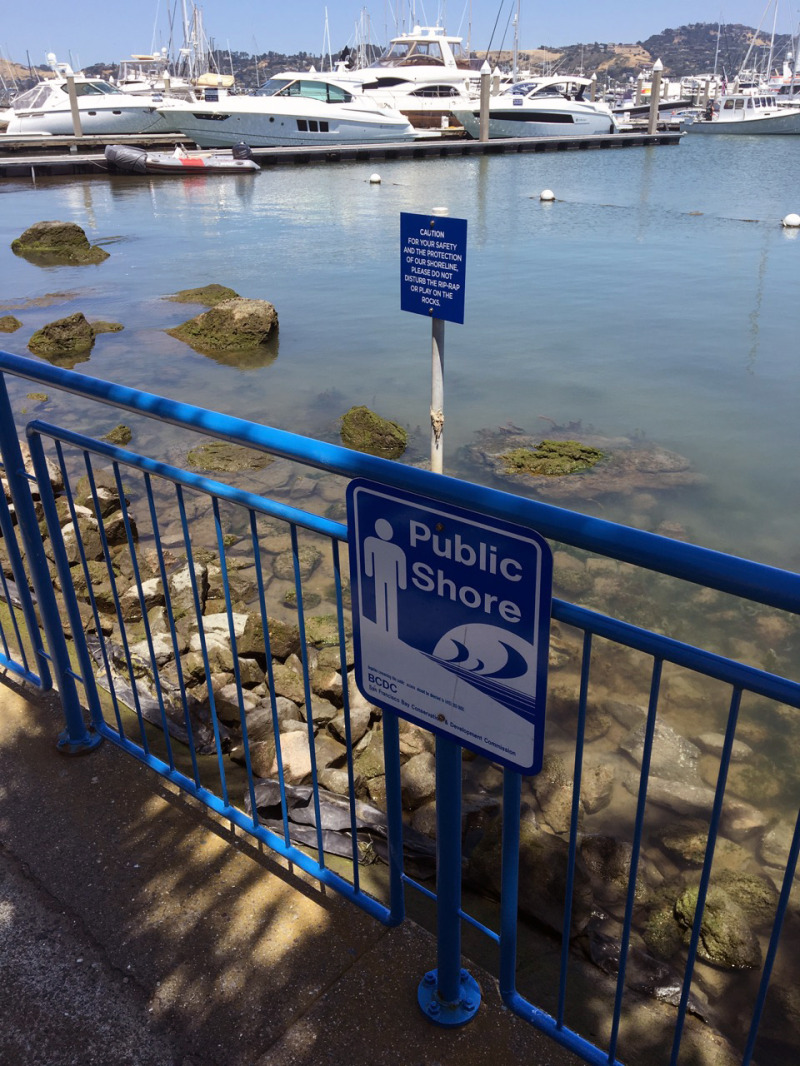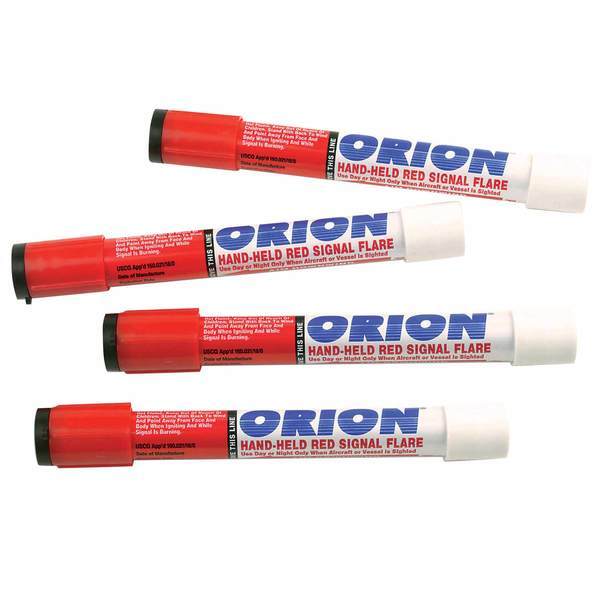
Bridge to Bridge to Bridge
If you’ve followed the Ronstan Bridge to Bridge over the last 20 years, you know you can make it from Vista Point in Sausalito to Yerba Buena Island faster than the fastest Uber driver. And so it was again this year. Perennial winner Johnny Heineken took his sixth win in the kite division with his fastest time ever at 11 minutes, 4 seconds — the course record still stands at 10 minutes, 31 seconds.

©2018 Latitude 38 Media, LLC
What’s the secret? As Johnny explained, "You take out the biggest kite you can hang on in the big breeze at the North Tower so you have plenty of kite power as the wind fades approaching the Bay Bridge."

©2018 Latitude 38 Media, LLC
The annual event invites all comers to a drag race from a starting line just outside the Golden Gate Bridge to a finish line between Yerba Buena and the Bay Bridge. Over the years, it’s included Aussie 18s, windsurfers, kiteboarders, MOD70s and a host of other challengers. This year, the fleet included 5O5s, who are competing in their North Americans out of the St. Francis Yacht Club.

©2018 Latitude 38 Media, LLC
With the fading breeze by Yerba Buena Island, only seven kiters, five windsurfers and 12 of the 5O5s finished. Following Johnny Heineken in second and third in the foiling kite class were Gabriel Wicke and Joey Pasquali. In the windsurfers, Chris Radkowski won the day in 22:02, edging out Xavier Ferlet by 10 seconds. Jean Rathle crossed the line in third.
In the 5O5 fleet, Michael Menninger and Reeve Dunn sailed to a win with a time of 25:08. "We started out away from everybody and keyed into a nice puff," recounted Dunn. "Michael did a great job keeping on the pressure and I just held on."
Menninger and Dunn also had a good first day in the first three races of the 5O5 North American Championship, which started earlier in the afternoon. Standing at second overall, they were awarded the Ronstan Top Performer of the Day. Mike Martin and Adam Lowry nabbed two bullets and are currently first overall, and Craig Thompson and Matthew Woodworth are holding strong at third.

At the award ceremony, we asked class leader Mike Martin what the fleet thought about tossing a downwind-only, long-distance race into the middle of the North Americans. Martin said the fleet was onboard. We say kudos to the 5O5 fleet for venturing outside the typical buoy-racing-only format in such a hotly contested event.

©2018 Latitude 38 Media, LLC
The 5O5s will continue their four-day event through Sunday, and if you can get close enough (without interfering) to watch a wire-to-wire spinnaker jibe, you’ll be impressed. There are seven world champions in the fleet.
State to Audit BCDC
After years of complaints about overzealous excessive, confusing and unfair and enforcement, on Wednesday, the state of California approved a request from a bipartisan coalition of state legislators to audit the Bay Conservation and Development Commission (BCDC).
Over the next year, the California State Auditor will evaluate the BCDC, which is responsible for regulating waterfront businesses and residents. The audit is the result of a number of constituent complaints throughout California — but especially in the Bay Area — over the BCDC’s enforcement practices. which was led by
“It’s nothing against their overall mission, but there have been a number of examples of overzealous enforcement,” said Hugh Bower, the chief of staff for South San Francisco Assemblymember Kevin Mullin, who leads the bipartisan coalition. Bower used the now-famous example of Scott’s Seafood being cited for having the wrong size and color table and chairs. “But we want to emphasize that in no way do we want to limit the core mission of the BCDC,” Bower told us.

“This is not a criminal investigation,” Bower added, saying that an audit is a review of how an agency is functioning and operating. “It’s kind of a healthy thing to do from time to time for different state agencies.”
In the run up to recommending an audit, Assemblymember Mullin’s office said they explored the public record and spoke to permittees, identified a pattern between separate cases, and noticed a common tactic of imposing maximum fines and penalties. This led to the push for a comprehensive review of the BCDC enforcement.
“Some permit holders perceive BCDC staff as motivated by a desire to obtain the biggest possible fine with punitive enhancements, rather than achieving a result that is best for the environment and the public good,” read a letter from the coalition of state legislators to the Joint Legislative Audit Committee (JLAC), which gave the go-ahead for the audit on Wednesday. “[Permit holders] describe the unwillingness on the part of the BCDC staff to look at the big picture and negotiate for those outcomes.”
The letter went on to describe something that we’ve heard over the past few months — that people doing business with the BCDC are often afraid to speak out. “Individuals have stated that they felt the enforcement process became personal when permittees pushed back against the claims contained in BCDC staff reports. Most troubling is that permittees have expressed to legislative staff their concern about ‘going on the record’ for fear of BCDC retaliation. This was reinforced when permittees were informed of the need to have public testimony in support of this request for an audit, and permittees declined.”
Generally speaking, an audit can have a number of possible outcomes. In some cases, an agency can be found to be operating perfectly. In other cases, an audit can result in recommendations made by the auditor; the agency in question can implement those recommendations on its own, or it can “push back.” Some audits reveal that an agency is following the letter of the law, but that the law itself needs to be amended. This is where a “legislative” fix might be necessary.

©2018 Latitude 38 Media, LLC
BCDC Executive Director Larry Goldzband told Latitude in an email that the agency “looks forward to the audit.” In an August 3 letter to the coalition of state legislators, Goldzband explain that, “During the past few years, BCDC has reinvigorated its enforcement program.” Before he was executive director, Goldzband was a BCDC commissioner, and said he was “frustrated by what appeared to be an inconsistent, scattershot, and ineffective enforcement program. When I applied for the position of BCDC Executive Director, I stated . . . that the BCDC needed to ‘adopt an enforcement strategy that is robust, timely and fair . . . We look forward to the State Auditor providing constructive input about how we can improve and revitalize the program even more.”
The coalition of state officials that pushed for the audit includes Democrat Mullin, Republican Assemblymember Marie Waldron from Escondido in San Diego County, Democratic State Senator Jerry Hill, and Democratic Assemblymember Marc Berman from Palo Alto. In the June 29 letter to the JLAC, the coalition said that, “State legislative staff reviewed the 10 BCDC cases that have been brought to the Enforcement Committee since 2016. In many of those cases, it appears that seemingly minor alleged violations of an ancillary nature received the same weight and consideration as serious alleged violations that may actually be causing serious harm to the environment. The current BCDC approach appears to involve alleging every possible permit violation, no matter how minor, and demanding penalties at the maximum $30,000 as allowed by the current law. Permit holders are confronted with potentially hundreds of thousands of dollars in penalties.”
The letter went on to say that records showed that “permit holders have raised concerns about the [BCDC] staff as follows: an inconsistent application of standards, lack of proper record keeping by BCDC, bias on the part of BCDC staff, and instances of BCDC staff ‘moving the goal posts,’ by changing requirements after permittees had worked to satisfy requirements previously set by staff.
“We are concerned that the actions of BCDC erode public trust in the organization.”
We will continue to report on this issue as it develops. As always, we’d like to know what you think.
This story has been updated.
Flare Recycling?
We received the following letter from Bob Adams:
"You can recycle paint, car batteries and prescription drugs at the point of sale, so why can’t we do the same with expired flares? It’s been proven that flares past their due date are somewhat unreliable, so I don’t want to keep them onboard. I also don’t want to put them in the trash or throw them overboard. I’ve been told to take them to the county HAZMAT site but that’s never a simple thing to do."

"I’d be more than willing to pay a small recycling fee whenever I buy flares just so that there will be an easy and reliable place to take them. What do some of your other readers do?"
Sunday Open House at Cal Sailing Club
On Sunday, August 12, Cal Sailing Club will be hosting an open house — and we’ll be there!
.jpg)
© Latitude 38 Media, LLC
Held between 1 and 4 p.m., Cal Sailing’s open houses generally attract a few hundred would-be sailors. "We typically have about 40 volunteers on duty during this event. After open house is over, we all help clean up and eat a community meal around 6 p.m."
We’ll be taking photos, shaking hands, handing out magazines, and giving away a few T-shirts, as well as a coveted Latitude 38 hoodie. We hope you can make it . . . and that you bring a few friends!
